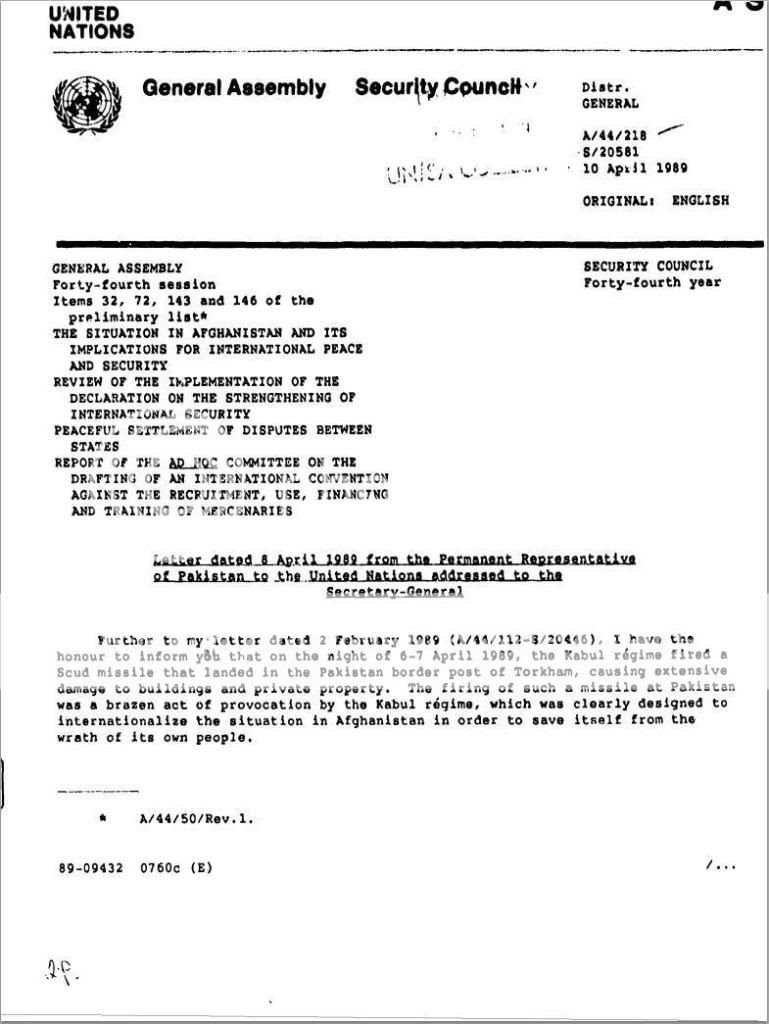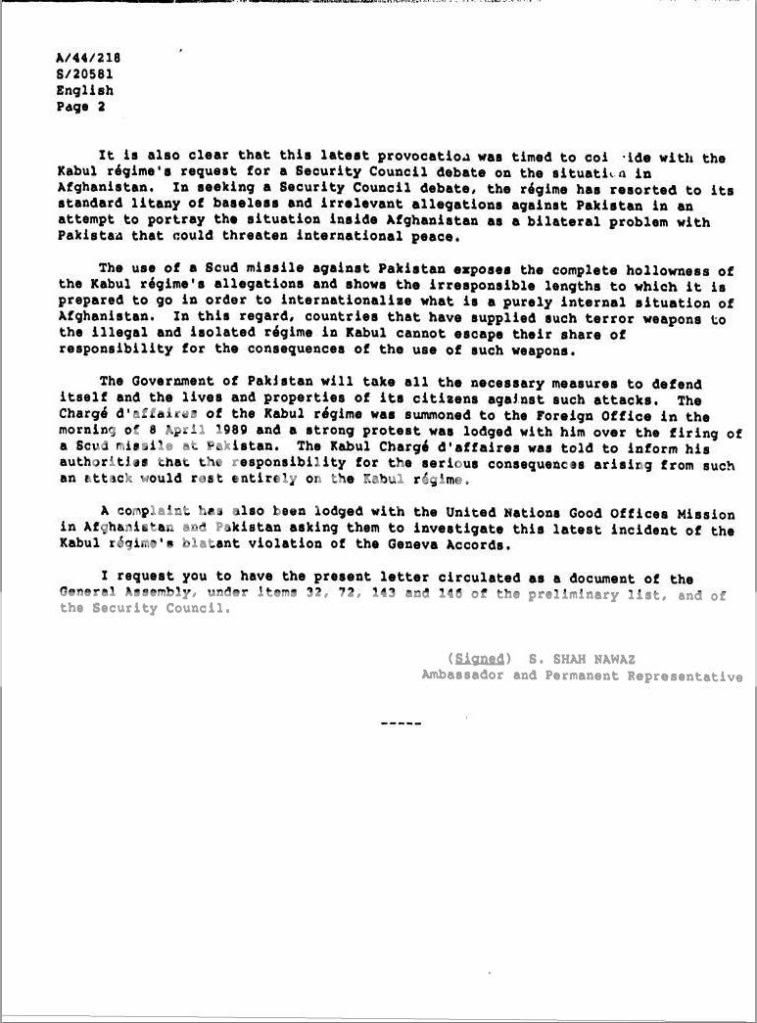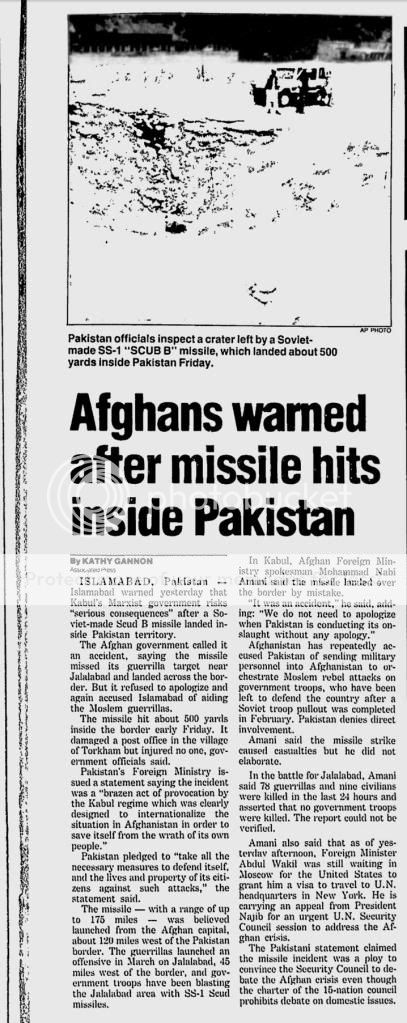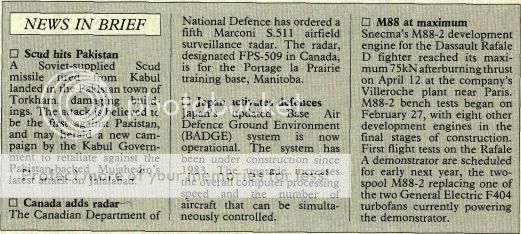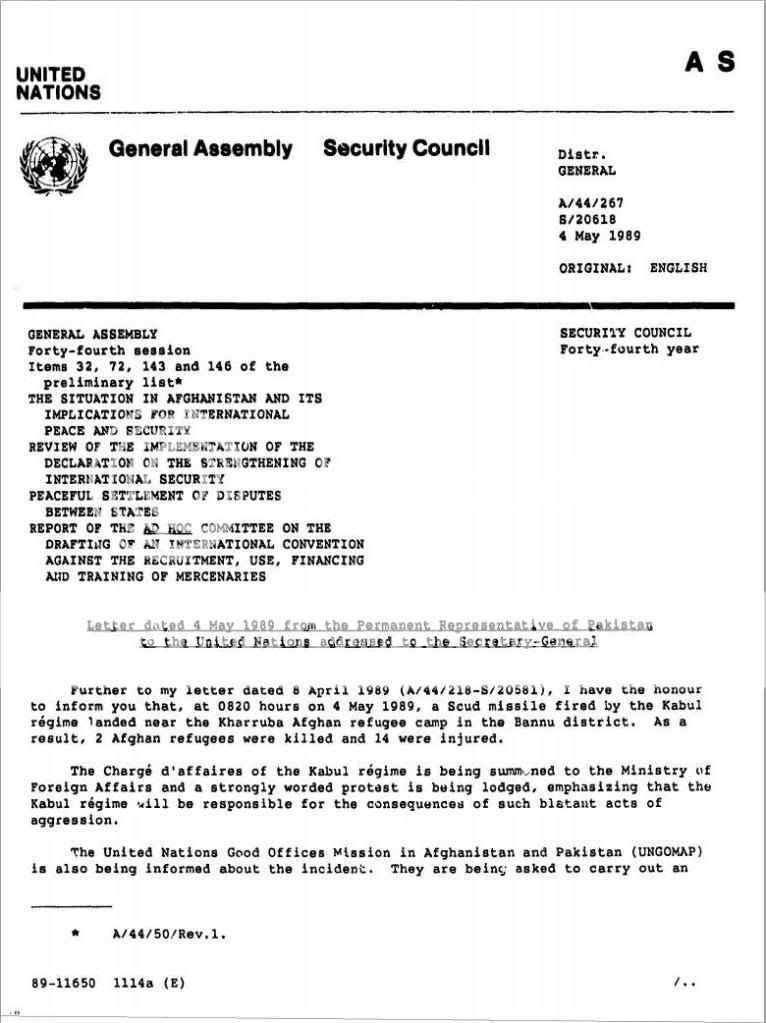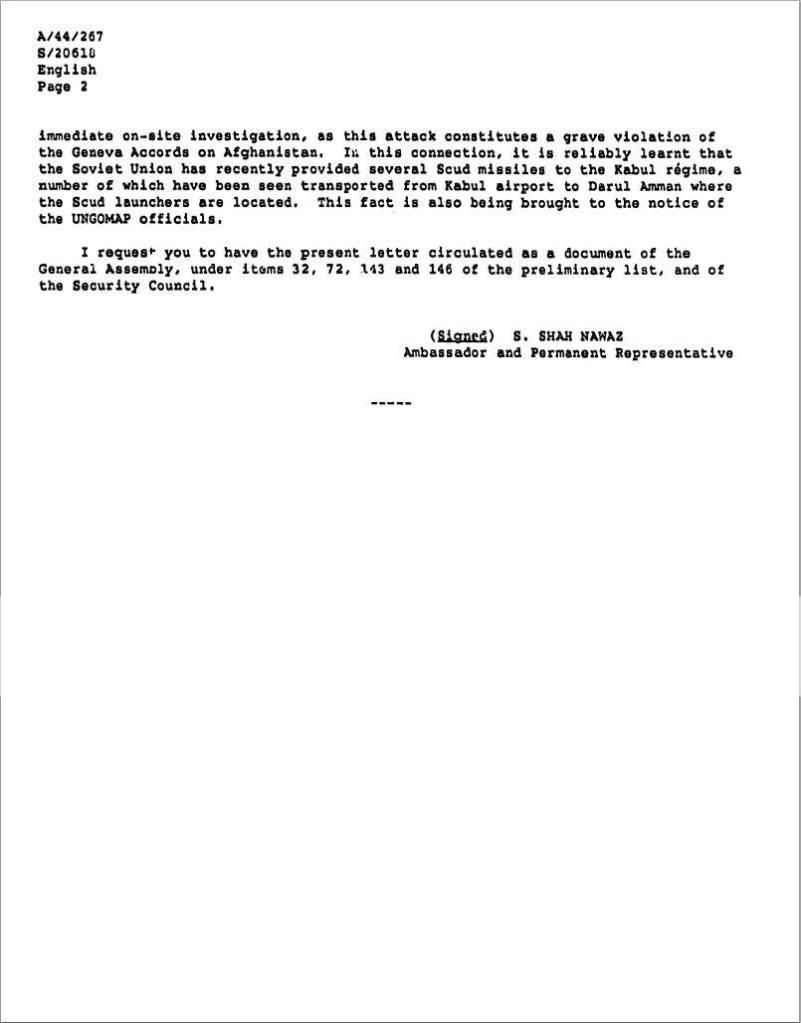Soviets Said to Deploy Missiles in Kabul
Wednesday November 02, 1988
By ROBERT PEAR, Special to the New York Times
The United States accused the Soviet Union today of deploying advanced missiles in Kabul, the Afghan capital, and said they posed a threat to Pakistan.
Charles E. Redman, the State Department spokesman, said the United States had learned of the missile deployment in the last 24 hours. A State Department official said the missiles, of a type known in the West as the Scud, had been driven past the American Embassy in Kabul.
Mr. Redman said the missiles had a range that ''puts the western frontier of Pakistan and much of Afghanistan itself within striking distance.'' The Pakistan border is about 60 miles from Kabul.
The American accusation came as the Soviet press agency Tass, in a report from Kabul, said the Afghan armed forces had reported obtaining ''long-range missiles with great destructive power.'' The Tass report did not specify the class, type or source of the missiles.
Jets and Bombers Deployed
On Friday, State Department officials said the Soviet Union had deployed about 30 ground attack planes, MIG-27 jets, in Afghanistan for offensive operations. The officials said the planes arrived late last month at the Shindand air base, in the western part of Afghanistan, and have been used to block an assault by Afghan guerrillas on Kandahar, the second biggest city in Afghanistan.
On Monday, Michael H. Armacost, the Under Secretary of State for Political Affairs, met with the Soviet Ambassador here, Yuri V. Dubinin, and expressed ''grave concern'' about the Soviets' use of Backfire bombers to hit targets in Afghanistan near Kandahar. Defense Department officials said the bombers were based at Mary, in the Soviet Union, across the border from the western Afghan city of Herat.
The increase in Afghan military weaponry comes as the Soviets have completed about half of the withdrawal of their more than 100,000 troops in Afghanistan. Under agreements signed in Geneva in April, the Soviets are supposed to withdraw all their troops by Feb. 15.
Mr. Redman said that deployment of the Scud missiles, combined with the deployment of MIG-27's and the use of Backfire bombers, ''calls into question the Soviets' stated desire to achieve a genuine political settlement in Afghanistan.''
Missiles Are Not Very Accurate
Scud is the designation used by NATO for a family of heavy artillery rockets operated by the Soviet Union and some of its allies for many years. Mr. Redman said the missiles in Kabul were believed to be of the Scud B variety. That model has a range of about 170 miles, according Jane's Weapon Systems, an authoritative reference work. The missiles are about 37 feet long and are deployed on eight-wheel transporters.
The Soviet Union has sold a version of the Scud to many countries, including Iraq, which modified the missiles to extend their range so they could hit Teheran, the capital of Iran.
The missiles are not very accurate. State Department officials said they surmised that the Soviets' main purpose in deploying them in Afghanistan was to intimidate Pakistan, which has been the main conduit for the delivery of American weapons to the Afghan guerrillas.
Mr. Redman said display of the Scud missiles ''is only the latest attempt by the Soviets to prop up a desperate regime which lacks legitimacy among the Afghan people and clearly demonstrates that the regime is incapable of defending itself.''
Guerrillas Get Stinger Missiles
''If the purpose of these latest military developments is to threaten Pakistan, the Soviet Union knows that Pakistan enjoys our full support in this situation,'' Mr. Redman said. He noted that the United States had vowed to continue supplying weapons to the Afghan guerrillas as long as the Soviets continued sending arms to the Kabul Government.
The Tass report today said the missiles were needed, in part, to respond to increased rocket attacks on Afghan cities, including Kabul, by the rebels.
Andrew L. Eiva, chairman of the Federation for American Afghan Action, which lobbies for military aid to the guerrillas, said today, ''At least two of the seven resistance groups have recently received small numbers of Stinger antiaircraft missiles'' from the United States.
'
'Nevertheless, in recent months, American officials have been pressing the resistance forces to refrain from attacking Soviet forces in Afghanistan,'' he said. ''I hope that doesn't tempt the Soviets to extend their stay.''
TEST-FIRING ANNOUNCED BY TASS
MOSCOW, Nov. 1 (Special to The New York Times) - In its report today from Kabul, Tass quoted the general staff of the Afghan armed forces as saying that ''a new kind of weapon, namely long-range missiles with a great destructive power, was adopted for service by the Afghan Army to defend territorial integrity and national sovereignty and repel foreign aggression.''
Tass added that the general staff had informed citizens that one missile would be test-fired tonight, suggesting the rockets are large enough to attract attention across the capital when they are launched.
A Western diplomat here who follows developments in Afghanistan said short-range Soviet missiles, most likely the kind sent to Afghanistan, would not be particularly useful in combatting guerrilla units that are dispersed through the rugged mountains and valleys of the country.
''It's hard to see how they could be used in a guerrilla war,'' the diplomat said.
The introduction of new weapons may be part of a Soviet effort to shore up defenses in the final phase of its withdrawal. Moscow has said repeatedly that it would take whatever military measures it considered necessary to defend Soviet forces during the withdrawal.
The New York Times (Wednesday November 2, 1988)
Soviets Said to Deploy Missiles in Kabul - New York Times









